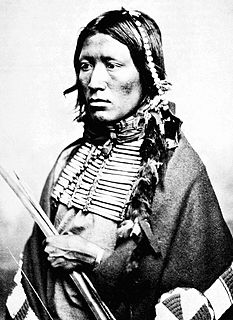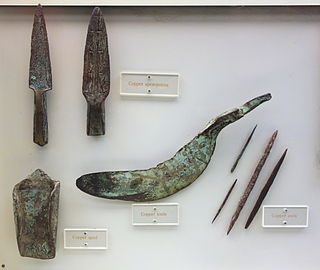 W
WThe Algonquian languages are a subfamily of American indigenous languages that include most languages in the Algic language family. The name of the Algonquian language family is distinguished from the orthographically similar Algonquin dialect of the indigenous Ojibwe language (Chippewa), which is a senior member of the Algonquian language family. The term Algonquin has been suggested to derive from the Maliseet word elakómkwik, "they are our relatives/allies". A number of Algonquian languages, like many other Native American languages, are now extinct.
 W
WAnishinaabe traditional beliefs cover the traditional belief system of the Anishinaabeg peoples, consisting of the Algonquin/Nipissing, Ojibwa/Chippewa/Saulteaux/Mississaugas, Odawa, Potawatomi and Oji-Cree, located primarily in the Great Lakes region of North America.
 W
WCopper Culture State Park is a 42-acre (17 ha) Wisconsin state park in Oconto, northeastern Wisconsin. The park has natural areas, farmlands, archaeological sites, and a Native American museum.
 W
WThe gunstock club or gun stock war club is an indigenous weapon used by Native Americans, named for its similar appearance to the wooden stocks of muskets and rifles of the time. Gunstock clubs were most predominantly used by Eastern Woodland, Central and Northern Plains tribes in the 18th and 19th centuries.
 W
WA hair drop is an ornament worn by men from Great Lakes and Plains tribes. It would be tied to the man's hair. The typical example consists of a quilled or beaded section on a strip of leather, which was later attached to an American buffalo tail. They could be over two feet long.
 W
WHanging Cloud was an Ojibwe woman who was a full warrior among her people, and claimed by the Wisconsin Historical Society as the only woman to ever become one. She was the daughter of Chief Nenaa'angebi and his wife Niigi'o. Aazhawigiizhigokwe was of the Makwa-doodem, and was born and lived most of her life at Rice Lake, Wisconsin. Her community became part of the Lac Courte Oreilles Band of Lake Superior Chippewa Indians after the 1854 Treaty of La Pointe.
 W
WOjibwe, also known as Ojibwa, Ojibway or Otchipwe, is an indigenous language of North America of the Algonquian language family. The language is characterized by a series of dialects that have local names and frequently local writing systems. There is no single dialect that is considered the most prestigious or most prominent, and no standard writing system that covers all dialects.
 W
WOld Copper Complex or Old Copper Culture were ancient Native North American societies known to have extensively produced and used copper for weaponry and tools. The archeological evidence of smelting or alloying is subject to some dispute, and it is commonly believed that objects were cold-worked into shape. Artifacts from some of these sites have been dated from 4000 to 1000 BCE. Furthermore, some archaeologists are convinced by the artifactual and structural evidence for metal casting by Hopewellian and Mississippian peoples.
 W
WQuillwork is a form of textile embellishment traditionally practiced by Native Americans that employs the quills of porcupines as an aesthetic element. Quills from bird feathers were also occasionally used in quillwork.
 W
WRibbon work is an appliqué technique for clothing and dance regalia among Prairie and Great Lakes Native American tribes.
 W
WSnow snake is a Native American winter sport traditionally played by many tribes in the northern Midwest, including the Ojibwe, Sioux, Wyandotte, Oneida and other Haudenosaunee people.
 W
WStone box graves were a method of burial used by Native Americans of the Mississippian culture in the American Midwest and Southeast. Their construction was especially common in the Cumberland River Basin, in settlements found around present-day Nashville, Tennessee.
 W
WAn underwater panther, called Mishipeshu or Mishibijiw in Ojibwe, is one of the most important of several mythological water beings among many indigenous peoples of the Northeastern Woodlands and Great Lakes region, particularly among the Anishinaabe.